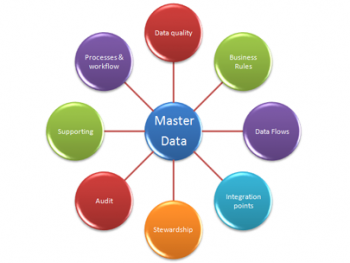MDM Solutions And Data Migration Migration Of Multiple Masters

It isn't unusual to see a vast number of software systems employed by one single business to handle their various business functions. These systems are backed by huge lists of data, that are shared and utilised by the wide majority of applications that come together and make up the system. This accumulated master data one of the most important assets for any company. A major reason for this is its usage across multiple applications. Due to this, any master data error can result in errors across all applications that utilise it. This requires businesses to take utmost care of each of their data assets, and employ various master data management tools to manage them individually.
The presence of a single set of master data is something every organisation dreams to establish. However, as elusive as this concept may seem, it is a rare concept that is only found in certain organisations. This is because a wide majority of companies expand and prosper through mergers and acquisitions. These mergers increase the amount of daily operations executed by the company. Every company acquired owns a customer master, an item master, and other masters. These masters are now introduced in the new organisation and form part of its functioning. The only way out is to merge the new master data with current master data by using MDM solutions. However, this is a tedious task indeed. Before moving to your new ERP system, it is important to address major issues such as the occurrence of several customers and products across multiple sets of master data, that too with different database keys and formats.
Data migration involves the migration of multiple masters. These master could be further classified into small and large masters based on their complexity. They are explained in detail below:
Small Masters – Holistic and Substantial impact on ROI
One of the most important activities during any data migration process, is to maintain an enterprise-wide view of various elements such as cost centres, financial account charts and legal entities which ultimately helps ensure a single, unified aim to govern consolidation and on-going financial management. This can be achieved by using the right master data management software. The new ERP software is bound to offer a wide variety of advanced process improvisation features. However, in order to achieve this, it is essential to migrate the small masters such as chart of accounts and currency on the basis of constant definitions of reporting and financial structures.
Though small in terms of enterprise master data volume, small masters have a great impact on the expected ROI from the project.
Key Masters – Dynamic in Nature and Reflect Core Business Values
Large masters are extremely dynamic in nature and best depict the business' core values. In the event of an ERP implementation, up-gradation or consolidation, these masters are designed to form the bulk of master data migration. Hence, in order to ensure the success of the project, one must allot maximum time to ensure their adequate and comprehensive planning and introduce processes such as data quality management from time-to-time.
Both small and key masters are extremely fundamental in ensuring the success of an organization. However, since they depend on external knowledge warehouses, key master management is indeed a very challenging activity.
Jessica Banks is an established data quality management professional at a large MDM firm. She writes to educate people about the advantages offered by MDM.
